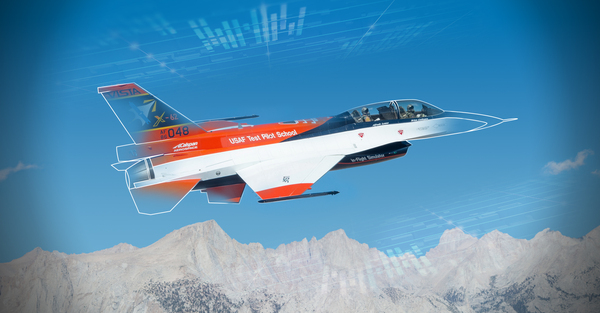Notifications
ALL BUSINESS
COMIDA
DIRECTORIES
ENTERTAINMENT
FINER THINGS
HEALTH
MARKETPLACE
MEMBER's ONLY
MONEY MATTER$
MOTIVATIONAL
NEWS & WEATHER
TECHNOLOGIA
TV NETWORKS
VIDEOS
VOTE USA 2026/2028
INVESTOR RELATIONS
COMING 2026 / 2027
ALL BUSINESS
COMIDA
DIRECTORIES
ENTERTAINMENT
FINER THINGS
HEALTH
MARKETPLACE
MEMBER's ONLY
MONEY MATTER$
MOTIVATIONAL
NEWS & WEATHER
TECHNOLOGIA
TV NETWORKS
VIDEOS
VOTE USA 2026/2028
INVESTOR RELATIONS
COMING 2026 / 2027
About Me
 Randy Mason
Randy Mason The future of the automotive, aerospace, and military sectors is being tested by Calspan, the leading independent provider of technological development services and systems.
 Randy Mason -
December 30, 2024 -
Business -
Flight Testing
flight test
-
273 views -
0 Comments -
0 Likes -
0 Reviews
Randy Mason -
December 30, 2024 -
Business -
Flight Testing
flight test
-
273 views -
0 Comments -
0 Likes -
0 Reviews

Flight testing is a critical aspect of the aerospace industry, ensuring that aircraft perform safely and efficiently under various conditions before they are approved for commercial or military use. For decades, Calspan has been at the forefront of flight testing, offering advanced solutions that help enhance the safety, performance, and reliability of aircraft. In this article, we will explore how Calspan's flight testing capabilities contribute to aerospace safety, discussing its methodologies, technologies, and services in the broader context of aviation advancement.
Before any aircraft can be deemed airworthy, it must undergo rigorous flight testing. These tests are designed to evaluate the aircraft’s performance, structural integrity, and safety features in real-world conditions. Whether for commercial airliners, military aircraft, or experimental designs, flight tests provide invaluable data that influence the final approval of a design for flight operations.
Flight testing is essential for the following reasons:
Safety: The primary objective of flight testing is to ensure the safety of passengers, crew, and the aircraft itself. Testing the aircraft’s systems, handling characteristics, and emergency capabilities can identify potential safety issues before they arise during actual operations.
Performance: Flight tests help assess the performance of the aircraft in different flight conditions, ensuring it meets the required specifications for speed, fuel efficiency, and stability.
Certification: In most countries, regulatory agencies like the Federal Aviation Administration (FAA) or European Union Aviation Safety Agency (EASA) require flight testing data as part of the certification process for new aircraft.
Design Validation: Engineers use flight testing to confirm that the design of the aircraft is sound, identifying areas that need improvement or optimization before full-scale production.
Calspan has been a leader in the field of flight testing for over 70 years, providing state-of-the-art services to the aerospace industry. Known for its expertise in both commercial and military flight testing, Calspan has played a vital role in enhancing aircraft safety and performance across the globe. Their flight testing services include a broad range of testing capabilities, advanced technologies, and specialized facilities that allow them to deliver comprehensive and accurate results.
Calspan offers a wide array of flight testing services that address the diverse needs of the aerospace industry. These services are designed to support the development and certification of both new and modified aircraft. Key flight testing services provided by Calspan include:
Aircraft performance testing is essential to determine how well an aircraft meets its designed capabilities in terms of speed, altitude, fuel consumption, and payload capacity. Calspan’s flight testing services can simulate various flight conditions, such as takeoff, climb, cruise, and landing phases, providing valuable data on performance metrics.
By using state-of-the-art instrumentation and test equipment, Calspan is able to measure key performance parameters like thrust-to-weight ratios, fuel efficiency, and aerodynamic performance under a range of operating conditions.
During flight test, Calspan’s engineers perform structural and stress tests to ensure that the aircraft’s frame and components can withstand the forces they encounter during normal and extreme conditions. These tests are designed to identify any weaknesses in the aircraft’s structure that could pose safety risks during flight.
Calspan’s flight testing also includes evaluating the behavior of critical components, such as the wings, fuselage, and tail section, under stress. This helps verify the strength and durability of the aircraft, ensuring it meets safety standards before entering service.
Modern aircraft are equipped with complex avionics and control systems that help manage flight operations, navigation, and communication. Calspan’s flight testing includes rigorous evaluations of these systems to ensure they function correctly and reliably in various flight environments.
Avionics testing often involves checking the integration and interaction of systems such as autopilot, flight control surfaces, radar, and communications systems. Calspan’s flight testing professionals use advanced testing techniques to validate these systems, ensuring they operate as intended and contribute to the overall safety and efficiency of the aircraft.
The performance of an aircraft can be significantly affected by environmental factors, such as temperature, wind speed, and atmospheric pressure. Flight testing allows engineers to assess how an aircraft performs in extreme environmental conditions, including high altitudes, heavy turbulence, and hot or cold climates.
Calspan’s expertise in environmental testing ensures that aircraft can operate safely and efficiently under a wide range of conditions. These tests help engineers evaluate the impact of environmental variables on the aircraft’s systems, structure, and overall performance.
One of the most critical aspects of flight testing is evaluating the aircraft’s safety systems. Calspan conducts tests on emergency systems, including oxygen masks, emergency landing gear, fire suppression systems, and evacuation procedures, to ensure they function correctly when needed.
These tests simulate emergency situations, such as cabin depressurization, fire onboard, or engine failure, to assess how well the aircraft’s safety systems respond. Calspan’s flight testing also helps identify potential areas for improvement in emergency protocols and equipment, contributing to the overall safety of the aircraft.
Calspan’s commitment to advancing aerospace safety is reflected in its use of cutting-edge technologies and innovations in flight testing. These technologies enhance the accuracy and efficiency of flight testing, providing engineers with high-quality data that can be used to improve aircraft designs.
To capture the data required during flight tests, Calspan uses sophisticated instrumentation systems that measure critical parameters such as altitude, speed, acceleration, and structural stress. These systems are installed on the aircraft before the flight test and are used to record real-time data, which is analyzed afterward to evaluate the aircraft’s performance.
In addition to actual flight testing, Calspan uses advanced simulation and modeling tools to predict how an aircraft will behave in various flight conditions. These tools simulate different flight scenarios, allowing engineers to test a wide range of variables without having to conduct numerous flight tests.
The data collected during flight tests is carefully analyzed by Calspan’s team of experts to provide detailed reports on the aircraft’s performance. These reports include recommendations for design improvements and safety enhancements based on the flight test results.
Calspan’s flight testing services adhere to strict safety protocols and regulatory standards. The company follows established guidelines from aviation authorities like the FAA and EASA to ensure that all flight tests are conducted safely and in compliance with international standards. These regulations help ensure that flight testing is carried out under controlled conditions, minimizing risks to aircraft, crew, and the public.
Calspan’s commitment to safety extends beyond regulatory compliance, as the company regularly conducts internal safety audits and continuously updates its safety practices to reflect the latest industry best practices.
Flight testing is an essential aspect of the aerospace industry, ensuring that aircraft are safe, reliable, and capable of meeting the performance requirements set by manufacturers and regulatory agencies. Through its comprehensive flight testing services, Calspan plays a critical role in advancing aerospace safety, offering cutting-edge technologies and expertise that support the development and certification of aircraft worldwide.
By providing thorough performance evaluations, structural assessments, and system validations, Calspan’s flight testing helps ensure that aircraft are capable of operating safely in real-world conditions. The company’s commitment to safety and innovation continues to drive the future of flight testing, making air travel safer for everyone. With its proven track record and state-of-the-art facilities, Calspan remains a trusted leader in the field of flight testing, advancing the standards of aerospace safety for the next generation of aircraft.
